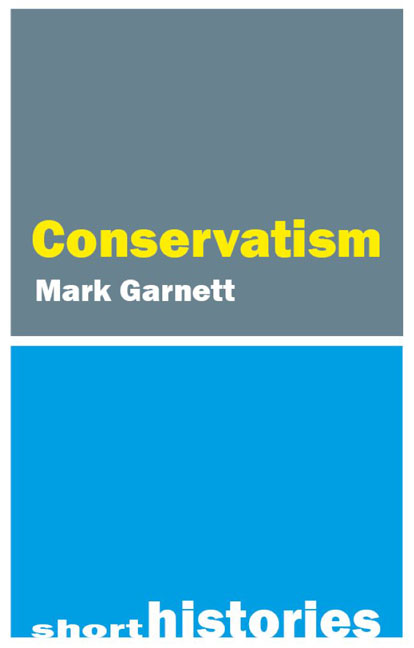Book contents
- Frontmatter
- Contents
- Preface
- 1 The contestable conservative tradition: Burke to Southey
- 2 The Conservative Party from Peel to Salisbury
- 3 “Converging streams”: British conservative thought from Southey to Cecil
- 4 The Conservative Party, 1902–45
- 5 “We must have an ideology”: conservatism since the First World War
- 6 The Conservative Party since 1945
- Conclusions: “Is conservatism dead?”
- Chronology of conservatism and the Conservative Party
- Further reading
- Bibliography
- Index
2 - The Conservative Party from Peel to Salisbury
Published online by Cambridge University Press: 20 January 2024
- Frontmatter
- Contents
- Preface
- 1 The contestable conservative tradition: Burke to Southey
- 2 The Conservative Party from Peel to Salisbury
- 3 “Converging streams”: British conservative thought from Southey to Cecil
- 4 The Conservative Party, 1902–45
- 5 “We must have an ideology”: conservatism since the First World War
- 6 The Conservative Party since 1945
- Conclusions: “Is conservatism dead?”
- Chronology of conservatism and the Conservative Party
- Further reading
- Bibliography
- Index
Summary
As Benjamin Disraeli wrote in 1835, “In times of great political change and rapid political transition, it will generally be observed that political parties find it convenient to re-baptise themselves” (Hutcheon 1913: 217). For the British Tory Party, the early 1830s was such a time. In 1832 the Whig Party – its rival since the late seventeenth century – pushed through a reform of the electoral franchise which marked the first significant step towards democracy in the United Kingdom. If Tories were to compete for office in this new context, they would have to discard their historic label; and “Conservative” seemed the most suitable substitute.
Some important details are missing from the Conservative birth certificate. For many years the parentage was attributed to John Wilson Croker (1780–1857: see Chapter 1), an Irish-born MP and journalist who was closely connected with many influential figures within the Tory Party. It turned out that a more obscure author had pre-empted Croker, using the term “conservative” in an article for the pro-Tory Quarterly Review, in January 1830 (Stewart 1978: 69). Robert Southey referred to “conservative” principles and a conservative party in the same journal the following year (Southey 1831: 315, 317). By the time of the Reform Act the label had been accepted in some unexpected places: even the maniacally partisan Duke of Newcastle-under-Lyne (1785–1851) switched from “Tory” to “Conservative” in his diary without missing a beat (Gaunt 2006: 201–202). However, no precise date of birth can be given. Indeed, the word “Tory” continues to be used, either by supporters who are proud of its traditionalist resonances, opponents who find that it fits better than “Conservative” in insulting slogans, or commentators for the sake of variety.
Between the Hanoverian succession in 1714 and the last, unsuccessful Jacobite rebellion of 1745 the name “Tory” had a clear political meaning. It denoted a stickler for the hereditary principle, who hoped for the reinstatement of the Stuart dynasty deposed in 1688–89. However, between the mid-eighteenth century and the late 1820s allusions to a cohesive “Tory Party” must be taken with a pinch of salt, despite the notable scholarship which has been devoted to its history (e.g., Wood 1924; Feiling 1924, 1938).
- Type
- Chapter
- Information
- Conservatism , pp. 29 - 66Publisher: Agenda PublishingPrint publication year: 2023

